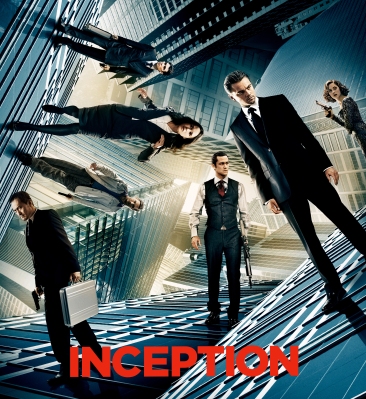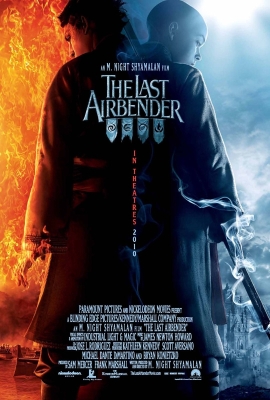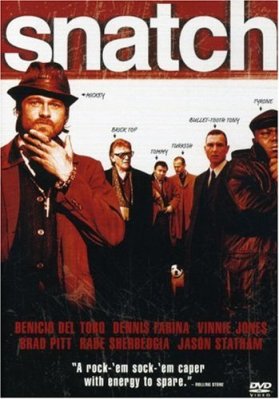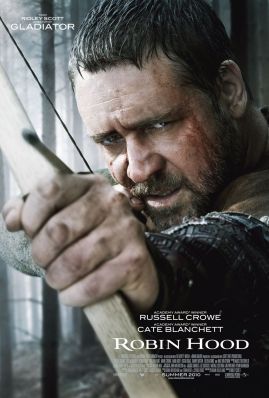I would recommend that you don’t read this blog post unless you’ve already seen the film Inception. This is not a review; it is analysis. Brief analysis, but analysis that could still spoil the film. Readers who haven’t yet seen the film probably won’t understand what I’m talking about. I will try—probably unsuccessfully—to keep things coherent.
Justin Chang, a movie reviewer for Variety, pointed out in his review that “movies are shared dreams.” In an ironically perfect metaphor, he calls Christopher Nolan one of “one of Hollywood’s most inventive dreamers.” This is perfect because it sums up the plot mechanics of Inception, wherein a dreamer uses a science-fiction device to bring a subject into a dream.
I’ll jump ahead and spoil the ending: Inception ends with the notion that the whole movie, or maybe just part of it, or maybe just the ending itself is a dream. Any part or even all of the movie could take place either in a dreamscape or in what we call “reality” or maybe something else, but the film won’t say which is the case. We, the audience, have to question these things. Because the ending questions the film’s reality, we have to go back and look thing over again. This movie begs to be analyzed and decoded. It needs to be rewatched to be understood.
We have to figure out for ourselves what parts of this movie are real. The reflexive implication is that we have to figure these things out outside of the shared dreaming experience of a movie theater as well. We have to figure out which parts of our world are unreal. We have to question the nature of our reality.
It is not a spoiler to say that Inception is about a team of corporate espionage specialists who hack into people’s minds to steal their secrets. The interesting twist is that the team is asked by a powerful figurehead named Sato to instead plant an idea in a subject’s mind. They have to do so in such a way that the subject will think they conceived the idea themselves. This process is called “inception,” and it’s nearly impossible.
As one character says, “If I tell you not to think about elephants, what do you think about?”
Elephants. You think about elephants. And you also know who made you think about elephants.
The team is led by a man named Cobb, played convincingly by Leonardo Dicaprio. Cobb has an emotional investment in the inception job. He lives in political exile because the authorities in America think he killed his wife Mal; all he consciously wants is to return home to his children. Sato says he can make this happen.
Cobb is haunted by the ghost of his wife in the form of a subconscious projection he carries with him into dreams. She makes things difficult for him in his line of work, especially when she starts killing people within the dreams. Usually this will wake them up, but in the inception mission, they are sent to a terrible place called “limbo.” Mal is played by Marion Cotillard, who is talented enough to play her character both as a whimsical figure of love and a horrific menace. She is also beautiful enough that she fits into the movie’s heist-noir elements as an enigmatic femme fatale.
If the movie has an internal conflict it is that the emotional love story between Cobb and Mal sometimes conflicts with the heist-like inception mission and the cold logic of the dream worlds. The movie is at its most interesting when Mal comes into literal conflict with Cobb and members of his team. Because, remember, Mal is just a projection of Cobb’s subconscious (probably), so that she sabotages his missions and sometimes attacks his cohorts may mean that his subconscious is self-sabotaging. Mal is partly a representation of the fact that Cobb wants to see himself fail.
Why? Well, that would be a spoiler, but I’ll tell you anyway. It is revealed that Cobb knows that Inception is possible because he first performed it on his wife. Experimenting, they went deep into a dream together. Because in Nolan’s dream mechanics, time is experienced exponentially slower in successive dream worlds than in reality, the couple literally spent decades together in a dream. Perhaps they killed themselves to get out; perhaps they lived out decades of their life in the dream world. Both explanations are given. But during their time in the dream, Cobb introduced an idea into his wife’s mind to help her cope with the length of time they spent inside: the idea that her world might not be real. As Cobb remembers it—and it is important to remember that the film’s perspective is not always reliable—she committed suicide because she thought dying would wake herself up. He is beset by guilt over his part in this tragedy. One of the implications of the film’s ending is that she might have been right.
These paragraphs I have written so far scratch only the surface of an outline of the level of analysis needed to decode this film. But Inception’s achievement is that it never becomes incoherent. Despite the fact that the movie is literally about a heist taking place in dreamscapes; despite the fact that at some points the narrative cuts between three parallel dreamscapes happening at different rates of time—and these dreamscapes include car chases, zero-gravity gun fights and explosions—the movie never becomes incoherent.
It’s also exciting to watch. There is enough chasing, punching, shooting and exploding to keep even the most witless viewer entertained. If you want, you can ignore all the intellectual mumbo jumbo and instead enjoy watching two guys fight in a rotating hallway. Christopher Nolan learned how to direct action with his two Batman movies. In Inception, he creates action scenes unlike any other movie’s.
Oddly, despite most of these action sequences taking place in dream worlds, they are not surreal. These dream worlds are governed by Newtonian physics. They take place in literalized spaces. They are more akin to the Matrix than the dreamscapes of Eternal Sunshine of the Spotless Mind or actual dreams. Every moment of strangeness is explained.
Inception’s lack of surrealism is surprising. This is a movie about dreams and dream worlds. Moreover, these dream worlds are accessed not through high-end technology, but through hallucinatory drugs. In order to perform their psychic heists, both Cobb’s team and their subject are hooked up to a device that pumps drugs into their arms. These drugs place them in the dream world. In essence, the entire inception mission is a shared drug experience.
Cobb is a drug addict. He finds a chemist to balance the multi-leveled dream worlds necessary for the inception mission. He finds this man in a Moroccan drug den. Cobb, like those who frequent the drug den, cannot dream without injecting himself with the special dream drug.
But there is no psychedelia. The dream worlds are strictly logical. When Cobb injects himself, he flashes to memories he has about Mal. There are no Jungian archetypes in Inception, or Freudian ideas aside from Mal’s invasions. The best and most accurate depictions of dreams and dream logic remain those David Chase wrote for The Sopranos. But Inception adheres to its own internal logic, and this makes it a successful mind-bender.
I should mention one other thing: Christopher Nolan has some fun with meta-fiction in this movie. Cobb is named after the elusive but charming con man character from his first movie, Following. Roger Ebert pointed out that Ellen Page’s character, an architect who designs maze-like landscapes for the dreams the team ventures into who also serves as an emotional guide for Cobb, is named Ariadne after the mythological figure who guided Theseus out of the minotaur’s labrynth. And Edith Piaf’s song “Non, je ne regrette rien” is played for the dreamers to indicate to them that they should wake themselves up; Marion Cotillard won an Oscar for playing Piaf in La vie en rose.
It’s not hard to make connections between Inception and Nolan’s other movies. Other critics have done that. As a filmmaker, he’s always been concerned with criminals and the blurred edges of reality. He has also frequently worked on stories about men who do extraordinary things because they are plagued with guilt. So far, he has not run out of stories to tell with these themes.
I’ve been having more vivid dreams since I saw this movie. They have been more lucid than the ones I had before. Maybe this is because, as an insomniac who rarely dreams, I’m actually getting a proper amount of sleep lately. Oddly, these lucid dreams have caused me to question reality in the same way I do when I don’t sleep for days on end and enter a state of waking dream. Now that I’m awake, I have to wonder if the dreams weren’t more real, or at least better than the reality I regularly find myself in. I have to question where I am, and why I am here.
Maybe Christopher Nolan successfully performed inception upon me.






